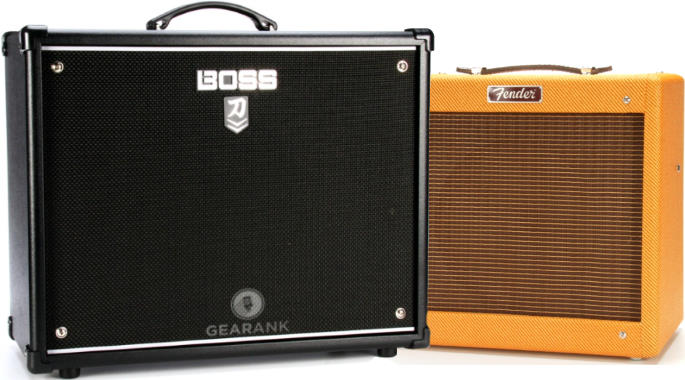
Disclosure
We recommend all products independently of 3rd parties including advertisers. We earn advertising fees from:
• • • • •

• • • • •
Amazon
As an Amazon Associate we earn from qualifying purchases.
• • • • •
More Guitar Amps
The sub $500 price range is where you can find good quality workhorse guitar amps that are still accessibly priced. From practice, to gigging and even for recording, here you can find amps that can meet your growing needs, as your skills and experience improve.
Featured here are market leading guitar amps that can be bought for under $500, based on analysis of actual user and expert ratings, reviews and comments. For this edition, we’ve expanded our recommended list into Four sections, with two new sections that feature top rated amp heads, and pedal amps. The other two sections from the previous edition are retained, featuring cream of the crop solid-state guitar combo amps, and market favorite tube combo amps.
The Best Guitar Amps Under $500
| Gearank* | SRC* | Check Price | ||||||
|---|---|---|---|---|---|---|---|---|
| Digital & Solid-State Combo Amps | ||||||||
 | Boss Katana-100 MkII | 93 | 900+ | |||||
| Combo Tube Amps | ||||||||
 | Vox VT40X | 91 | 600+ | |||||
 | VHT Special 6 | 90 | 250+ | |||||
| Amp Heads - All Types | ||||||||
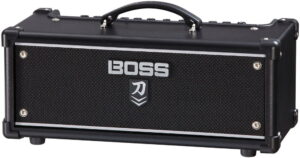 | Boss Katana Head MkII | 96 | 450+ | |||||
| Floor / Pedal Board Amps | ||||||||
 | Seymour Duncan PowerStage 170 | 91 | 175+ | |||||
 | Seymour Duncan PowerStage 200 | 88 | 20+ | |||||
Author & Contributors
Alexander Briones
I have been writing about and researching music gear for many years, all while serving as a music director at my local church. I engage in guitar playing and singer-songwriter stints, in addition to mentoring young musicians and teaching guitar and bass.
Best Digital & Solid-State Combo Amps Under $500
Boss Katana-100 MkII 1x12" (KTN-100-2) 100-Watt Combo Amp
This is part of Boss' improved line of amps that feature their Tube Logic technology, which emulates components of tube amps for improved realism.
It also comes with built-in digital effects, allowing you to choose from 60 Boss effects and run up to 5 of them simultaneously.
Amp modeling is divided into 5 voicings: Clean, Crunch, Lead, Brown and Acoustic, and MkII introduces a variation switch that changes the voicings - essentially giving you 5 more Tube Logic amp models.
Another noteworthy feature is the inclusion of Variable Power Control, which lets you attenuate the power to as low as half a watt, to achieve cranked tones at lower volume levels.
It has a wide variety of connectivity options including USB for recording with speaker emulation, and a power amp input.
Specifications:
- Power: 100W with Power Attenuation (50W, 0.5W)
- Speaker: 1 x 12"
- Amp Modeling: Clean, Crunch, Lead, Brown, Acoustic
- Effects: 60 Boss Effects
- Input: 1 x 1/4" (Guitar), 1 x 1/4" (Power Amp), 1 x 1/8" (Aux)
- Outputs: 1 x 1/4" (Line), 1 x 1/4" (Headphones/Rec)
- Weight: 32.6 lbs.
Pros:
Both beginners and experienced guitarists find themselves blown away by the versatility of the Katana-100 MkII 1x12", they appreciate the various tones that can be played with, while pros appreciate the connectivity options and it's volume flexibility, thanks to its built-in power attenuator. Many are also impressed with its tube like tone, and as expected, most users are pleased with the built-in effects. Boss' reputation for durability also applies to this amp, and this is noticed by reviewers.
Cons:
There are a few who caution that it may take some time to learn the controls, but doing so lets you make better use of its many features. There are also a few who report issues with the software editor, but they have nothing against the actual amp.
Overall:
With its flexible volume and tone settings, the Boss Katana-100 MkII is more than capable of growing with your playing and productivity needs.
Best Combo Tube Amps Under $500
Vox VT40X
The Vox VT40X is a tube/digital hybrid, sporting a genuine 12AX7 preamp tube with built-in DSP for amp modeling and effects.
This melding of old and new technology allows the amp to retain the vibe of classic tube amps, while having the flexibility of modern amp modelers.
Speaking of flexibility, the Vox VT40X lets you choose from 11 preloaded amp models (expandable to 20 via its software editor), and 13 effects - all of which are customizable via the software editor.
This means that you are getting a tube amp and a versatile guitar rig all in a compact and more importantly, affordable package.
With its power rating and rich feature set, the Vox VT40X is easily the best value tube amp on this recommendation list.
Specifications:
- Power: 40W
- Preamp Tube: 1 x 12AX7
- Speaker: 1 x 12"
- Amp Modeling: 11 Amp Models (Up to 20 via Editor Software)
- Effects: 13 (3 Simultaneous)
- Input: 1 x 1/4", 1 x 1/8" (aux)
- Outputs: 1 x 1/8" (Headphones)
- Weight: 20.94 lbs.
Pros:
Reviews of the Vox VT40X continue to be overwhelmingly favorable, pointing to the amp's value for money as its best trait. It's no surprise that it can reproduce the jangly bright tones of classic Vox amps, impressing even the experts. While other fans of the amp report that it is relatively easy to craft good sounds with its interface. Nick Guppy said in his Music Radar review, "There's no real secret to this; they sound superb".
Cons:
There are a few who complain about noise from cabinet components rattling, but it maybe due to some small parts coming loose on the inside, which can be fixed. As such, better handling care is recommended, thankfully it is not much of a deal breaker given that this amp comes with a 12AX7 tube. Speaking of tubes, there are some users who got better results after swapping out the default tube. Others are looking for modern features like Bluetooth connectivity which this amp doesn't have.
Overall:
Who said you have to sacrifice versatility when you want tube tone? Check out the Vox VT40X.
VHT Special 6 AV-SP1-6 1x10" 6-Watt Tube Amp
Boutique quality tube amps are usually beyond the reach of this price range, but thanks to companies like VHT, you can get your hands on a hand-wired amp like the Special 6 at a very accessible price.
This compact all-tube combo is meant for intimate venues and recording, with a 6W amplifier section that drives a 10" speaker.
At the core of this amp is a single 12AX7 preamp tube and one 6V6 output tube, and it has a very simple set of controls, one for tone and the other for volume.
In addition, VHT added a boost channel which can be accessed by pulling the volume knob.
Interestingly, the amp is being marketed as a good base for customizing your own amp, thanks to its streamlined and hand-wired configuration; VHT even provides a PDF of the schematics.
Specifications:
- Power: 6W
- Speaker: 10"
- Amp Modeling: None
- Effects: None
- Input: 2 x 1/4" (Lo/Hi)
- Outputs: 3 x 1/4" (Speaker Out)
- Weight: 25 lbs.
Pros:
Overall sentiment towards the VHT Special 6 is very positive, with most users praising it for churning out good tones with minimal tweaking. It also gets a lot of thumbs up for its build quality. While there's not much to tweak, some users are surprised that its single tone knob configuration offers good enough flexibility.
Cons:
The most common concern with this amp is the quality of the tubes that it comes with. Some users report improved overall tone and response after they swapped out the tubes.
Overall:
If you're looking for a budget friendly hand-wired tube amp that you can tinker with, then this is for you.
Best Guitar Amp Heads - All Types - Under $500
Boss Katana Head MkII 100-Watt Guitar Amp Head
The Boss Katana MkII series is so well received that some are describing it as "hype", as proof of this - three of their 100W models rated high enough to make it into this guide.
This 100-Watt Amp Head takes the same technology found in the combo version, and packs it in an amp head configuration which you can pair with your preferred speakers. But what sets this one apart is the inclusion of an internal 5" speaker - which together with the built-in power attenuator, allows for getting good tones at low volume levels.
Everything else follows the tried and tested Katana formula, at the core of which are five amp voicings that include Clean, Crunch, Lead, Brown and Acoustic. MkII adds in a variation switch that modifies the five voicings, essentially expanding your amp tone options to 10.
As mentioned above, it comes with built-in power attenuator, that lets you switch from 100W, to 50W, all the way down to 0.5W.
As expected, it comes with Boss effects derived from the companies popular stompboxes and guitar processors.
Other noteworthy features include effects loop and power amp input.
Specifications:
- Power: 100W (Power Attenuator: 50W, 0.5W)
- Channels: 4
- Amp Models: 10
- Effects: 60 Boss Effects
- Input: 1 x 1/4, 1 x 1/4" (Power Amp), 1 x 1/8" (Aux)
- Outputs: 2 x 1/4" (Line/Speaker), 1 x 1/4" (Headphones/Rec)
- Weight: 19.4 lbs.
Pros
Many consider the 5" internal speaker as the best asset of this amp head, making it very versatile, and more importantly making it more friendly to guitarists who are stuck at home. There are reviewers who use the 5" speaker exclusively and are happy with the tones, while those who use it as an amp head are happy to have a low volume option built into the amp head. It's also worth noting that many users find Katana MkII amp head to be easy to use, which is surprising given the many features it houses.
Cons
There are a few complaints regarding the software editor, which they say is hard to configure or not working at all for some users.
Overall
The Boss Katana Head MkII Amp Head is a bedroom friendly amp that you can take on stage, highly recommended especially in today's stay at home restrictions.
Best Guitar Floor / Pedal Board Amps - Under $500
Seymour Duncan PowerStage 170
The Seymour Duncan Power Stage 170 is a 170W (at 4ohms) solidstate power amplifier in a pedal form factor that's around the size of 2 regular pedals side by side.
As an amplifier, it is designed to drive a 4 ohm speaker, while sitting comfortably on a pedalboard or on the floor. This means that you won't have to be carrying an amp head to a gig, while still being able to run a speaker cabinet.
Top mounted controls include a big level knob for adjusting output, and three knobs for adjusting bass, mid and treble.
Specifications:
- Power: 170W
- Channels: 1
- Effects: None
- Input: 1 x 1/4"
- Outputs: 1 x 1/4" (Speaker)
- Weight: 2 lbs.
Pros
Owners are pleased at how the PowerStage 170 has simplified their rig, and this is especially loved by those who are looking for ways to make their performing rig lighter. The sound of the amp also gets a lot of commendations, described as full sounding and pedal friendly. Many are also pleased at how responsive it is to input volume changes, much like a regular amp.
Cons
There are some who aren't too happy with this amp's voicing, stating that it doesn't sound like the tube amp that they prefer. But this is expected given that this is meant to be a clean power amplifier, and not a preamp to color your sound.
Overall
It doesn't get any simpler than this, the Seymour Duncan PowerStage 170 lets you put your amp right on your pedalboard.
Seymour Duncan PowerStage 200
The PowerStage 200 takes Seymour Duncan's Class D amplifier pedal format up a notch by adding headphone amplifier functionality, complete with Cab Sim and extra input/output options.
At 200W, this pedalboard friendly amplifier is viable for stage use, while the headphone amp feature makes it just as viable for quiet practice.
And it does all this while retaining a reasonably compact size, which is around the same size as 2 regular pedals side by side.
Another important distinction that this amp provides over the PowerStage 170 is the addition of a Presence knob.
Everything else is similar to its smaller sibling, including the top mounted control form factor and the large volume knob.
Specifications:
- Power: 200W
- Channels: 1
- Effects: None
- Input: 1 x 1/4", 1 x 1/8" (Aux in)
- Outputs: 2 x 1/4" (Speakers), 1 x XLR (Cab Simulation)
- Weight: 2.87 lbs.
Pros
Reviewers describe this as a great solidstate power amp to partner with guitar processors and amp modelers. Users mention getting good results when pairing with Line 6 processors like the HX Stomp and Helix, along with other processors from Boss, Fractal Audio, Kemper and more. Owners are also happy with its overall build, stating that it feels and looks solid, and sits nicely on their pedalboards. There are also many who attest to it being more than capable of driving speakers for common gig venues and stage volume. Guitar Interactive Magazine summarized their review by saying, "It's insanely powerful, versatile and offers a ton of tweakability."
Cons
Since this is meant as a power amplifier, it is not meant for tone coloration as many other guitar amps are, however that makes it ideal for those who like to get their tone solely from their guitar processors.
Overall
If you're using an amp modeler and you are looking to bring back the feel of interacting with an actual amplifier without having to haul bulky amp heads, then this is for you.
Things to Consider When Buying a Guitar Amp Under $500
What Amp Can You Afford?
Everyone has a budget that should not be ignored. If you think the best guitar amps under 500 category is a stretch, you should consider something more affordable. You may want to look at the best guitar amp under 200. If on the other hand you can afford something better you should consider the best guitar amps under 1000. You can find our recommendations within our article the best guitar amps up to 1000, the top brands.
What is a Combo Amp?
A combo amp is simply one where the amplifier section and the speaker cabinet are combined into a single unit instead of having separate amp heads and speaker cabinets. This combined configuration is popular because it makes amplifiers easier to carry around, and reduces the number of equipment that you have to manage. This simplified configuration also makes combo amps ideal for students and beginners.
What is an Amp Head?
Amp heads are amplifiers that don't come with speakers, as such they are smaller than their combo counterparts. But to make them work, you are still required to plug them into a separate compatible speaker cabinet. Amp heads are preferred by some because they can use the speaker cabinet that they prefer, others also prefer the distributed weight of separate amp head and speaker cab vs combo amps when lugging around. Interestingly, some manufacturers like Boss have been installing small speakers into their amp heads, giving users a convenient low volume option, that essentially transforms the amp head into a mini combo amp.
What is an Pedal Amp?
Pedal amplifiers are essentially amp heads that come in a floor / pedalboard friendly form factor. They are expected to do the same task, amplify your sound and drive a speaker cabinet. The main advantage that they have is that they are smaller and easier to incorporate into existing pedalboard rigs. The downside of having a small form factor means that they may lack features and connectivity options that amp heads offer.
Tube vs Solid-State
It's interesting how tube technology, which is now over a century old, still persists in this modern era - mainly thanks to guitarists who love the sound of tube amps. The sound, feel and response of tube amps are generally regarded to be better than solid-state, but since they utilize fragile tubes, they are typically more expensive and require more handling care and maintenance. On the other hand, solid-state amps are generally regarded as more reliable, and since they use readily available components - they are often more affordable. Thanks to improvements in digital sound processing, these amps are also getting ever closer to nailing the feel and sound of their tube counterparts. Those who are looking for something practical that can get the job done will appreciate solid-state amps, while those with picky ears may want no less than a genuine tube amp.
Power Rating
Power rating describes the loudness of an amplifier, so generally speaking, the higher the power rating, the louder amp. Those who are looking for a stage amp will want something loud. But it's not always about being loud, because most situations call for lower volumes, especially when practicing at home, hence the availability of low wattage tube amps. This is also the reason why some amps come with built-in attenuators, which allow users to drive the amp hard at lower volumes. Note that tube amps tend to be louder than similarly rated solid-state amps.
Speaker Size
Speaker size also affects overall loudness, but even more so, it affects the sound clarity. Smaller speakers tend to emphasize the mids, which complements most guitar styles. On the flip side, there are guitarists who prefer the added bass emphasis of bigger speakers for a fuller sound.
Amp Modeling
Made possible by improvements in Digital Sound Processing (DSP), more and more manufacturers and guitarists are embracing the convenience and versatility of amp modeling. You can read more about the best modeling amp, where we share our top picks. Some go so far as to allow complex customization of virtual amp components. While having more tone palettes is good, having too much of a good thing can be bad for some. If you're into sonic versatility and personalization then you'll want one with more features. Those who prefer plug-and-play convenience will appreciate amps with fewer options and controls.
Built-in Effects
Reverb is the most common effect added to amplifiers, because of how it adds space and texture to the sound. Some electric guitar amps come with other effects, but they are usually limited in terms of function and controls. Some frown on the quality of these extra effects, but others appreciate the practicality and convenience that they offer.
Connectivity
If you are planning to use your amp on stage or for recording, extra connectivity features will help greatly. Those with speaker emulated outputs allow for direct connection to PA systems and recording consoles. The ability to play quietly via headphones is also a nice plus, especially if you're looking for a good practice amp. Some of the recently released amps feature USB connectivity for direct recording and software control, while others even come with Bluetooth technology, which allows for convenient wireless audio streaming straight to the amp. Having two or more inputs is another nice feature to have, so you can plug in multiple electric guitars. Having an ABY Pedal is also good for multi-amp switching and stereo setups.
Best Guitar Amp Under $500 Selection Methodology
The first edition was published in 2018.
This guide features guitar amplifiers priced between $300 and $500 which are available from major US based music gear retailers.
For this edition, we've expanded the guide to include sections for amp heads and for floor / pedal amps. They join the original two sections so you can better choose between the best rated Tube Amp vs Solid State amp combos. We surveyed the retailers and put the 59 most promising qualifying models on our short-list for closer examination. We then collated reviews, ratings and forum discussions about each amp and processed that data with the Gearank Algorithm to produce rating scores out of 100 for each of them. More than 13,700 sources were examined during this process. We then selected the highest rated models in each category above to recommend and used our research to provide an overview of the pros and cons of each amp. For more information about our methods see How Gearank Works.
About the Author and Contributors
Here are the key people and sources involved in this guide's production - click on linked names for information about their music industry backgrounds.
Lead Author & Researcher
Alexander Briones
I have been writing about and researching music gear for many years, all while serving as a music director at my local church. I engage in guitar playing and singer-songwriter stints, in addition to mentoring young musicians and teaching guitar and bass.
Drawing from his experience in performing and recording, he teaches guitar and bass and mentors young artists to be better musicians. And when he is not busy playing or tinkering with musical gear, he puts on his entrepreneurial hat, which helps fund his passion for collecting guitars, mecha figures and Gunpla kits.
Contributors
Alden Acosta: Product research.
Jason Horton: Editing and Illustrating.
Media
Main/Top Image: Produced by Gearank.com using photographs of the Boss Katana-100 MkII and Fender Pro Junior IV.
The videos have been embedded in accordance with YouTube's Terms of Service.
The individual product images were sourced from websites, promotional materials or supporting documentation provided by their respective manufacturers.

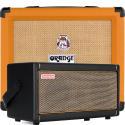

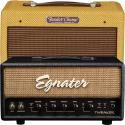 The Best Small / Low Watt Tube Amps – Combo & Amp Heads
The Best Small / Low Watt Tube Amps – Combo & Amp Heads







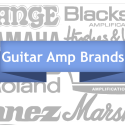 The Best Guitar Amp from the Top 10 Guitar Amp Brands
The Best Guitar Amp from the Top 10 Guitar Amp Brands
We’ve removed the following amps from the recommended list above due to them no longer being available to buy for less than $500:
We’ve removed the following amp head because it’s no longer available: Orange Crush Pro 120 CR120H.
Publication of our June 2021 Edition resulted in the following guitar amps coming off the recommended list above, but you can still see our analysis of them:
The following amp has been removed from the recommended list above due to a price increase making it ineligible for this guide: Roland Blues Cube Hot.
We’ve removed the Marshall DSL5CR due to a price increase which put it above this guide’s price limit of $500.
Our July 2020 updated resulted in the following amps coming off our recommended list above but you can still see our analysis of them:
As a result of our July 2019 update the following amps came off our recommended list above, but you can still read our analysis of them:
Today the following amp was removed from our recommended list above, due to having been discontinued, but you can still read our analysis: Blackstar HT-1R